The 12-24mm ultra-wide to standard-wide focal length, and promise of excellent performance with edge-to-edge sharpness, make the Sigma 12-24mm f/4 A an attractive option for high-resolution Nikon D750 and D800 shooters looking for an affordable wide-angle zoom for landscape, architectural, or interiors photography. Other features include Sigma’s HSM autofocus motor with full-time manual focus override, a 24cm minimum focus distance for closeup photography, and compatibility with Sigma’s USB dock for updating firmware and fine-tuning focus parameters. Although specifically designed for full-frame cameras, the Sigma 12-24mm f/4 A remains compatible with Nikon APS-C DSLRs, where it offers an equivalent 24-36mm focal length. While that remains a somewhat useful zoom for press, event, or general photography on Nikon smaller-chip cameras, if you’re after a dedicated wide-angle zoom, a specific DX-mount lens is a more sensible option.
Specifications
- Nikon F FX mount
- Constant f/4 maximum aperture
- One SLD and five FLD elements
- Super Multi-Layer Coating
- Hyper Sonic Motor autofocus
- Internal zoom and focus with MF override
- Rounded 9-blade diaphragm
Highlights
- Ultra-wide field of view
- Excellent sharpness
- Best-in-class distortion control
Potential Drawbacks
- No image stabilization
- F/4 maximum aperture
Overall image quality
Achieving an overall DxOMark score of 25 points, the Sigma 12-24mm f/4 A ranks fifth place for all wide-angle zooms we’ve tested on the Nikon D800. With the overall score calculation taking into consideration a lens’s light transmission and low-light performance, crucial in modern digital photography, the Sigma 12-24mm f/4 A A’s narrower f/4 maximum aperture has influenced this result, placing the lens behind faster-aperture f/2 and f/2.8 equivalent lenses. For such important lens metrics as sharpness, distortion, and vignetting, however, the Sigma lens performs either on par with or better than the ultra wide-angle lens competition from Nikon and Tamron.
Scoring 17 P-Mpix for sharpness, resolution on the Sigma 12-24mm f/4 A equals the best performance of Nikon’s ultra-wide 14-24mm, and is only a little behind the class-leading Sigma 24-35mm f/2 A. At f/4, the Sigma 12-24mm f/4 A offers uniform resolution of around 70% acutance in the field between 12 and 20mm, with good center sharpness and slightly softer corners at 24mm f/4. It hits peak sharpness of over 70% acutance at f/8, and using the mid apertures (f/8 and f/11), it’s very close to uniform at all focal lengths. Using the minimum f/22 aperture for long depth-of-field shots, the Sigma ultra-wide zoom offers good uniform sharpness at around 60% acutance.
Distortion causing curvature in the field can be an issue on wide-angle zoom lenses, but it’s well within reasonable parameters on the Sigma 12-24mm f/4 A, with only minor barrelling at 12mm and pincushion at 24mm. We advise some post-production correction for straighter lines, but with only minor distortion captured initially, this adjustment requires cropping only a small area of the image.
The Sigma’s heaviest vignetting of –1.1Ev occurs at 12mm f/4 (as you’d expect), but closing down to f/5.6 reduces corner shading significantly at the widest focal length. Although some minor vignetting between –0.66Ev and –0.33Ev occurs at all other focal lengths and aperture settings, it’s not problematic or unusual for a lens of this type.
Image quality compared
The $1897 Nikon AF-S 14-24mm f/2.8G ED (Nikon 14-24mm f/2.8G) and $1199 Tamron SP 15-30mm f/2.8 Di VC USD (Tamron 15-30mm f/2.8) both offer a similar proposition to the Sigma as full-frame wide-angle Nikon mount lenses. The Sigma is the widest at 12mm, but the Tamron offers the greater focal range between 15mm to 30mm, making it a useful option for both wide and closer-to-standard focal length shots. The Tamron also offers stabilization, which although arguably more useful on longer telephoto focal lengths, can be handy for photographers who want to leave the tripod at home when shooting landscape and architectural subjects. The Tamron and Nikon wide-angle zoom alternatives also offer that faster f/2.8 maximum aperture, which is an important consideration if you’re looking for a wide-angle lens for low-light photography.
In terms of lens metrics, the Sigma 12-24mm f/4 A boasts the best overall distortion results, displaying the least barrel curvature at the widest focal length.
The Sigma lens is also fractionally sharper at f/22 compared to its rivals, which could be important for some landscape and architectural photography. Sharpness at f/4 is fairly similar among the three, with the exception of that little bit of edge softness that the Sigma displays at 24mm f/4.
The heaviest headline vignetting score for the Tamron and the Nikon is recorded at f/2.8, where they display the most corner shading, but at f/4, the Tamron is slightly ahead. To be fair, there’s not much in it, so we’re splitting hairs a little, and although all three wide-angle zooms vignette a little at all settings, the effect is well-controlled at apertures of f/5.6 or narrower on all three lenses.
Of the three, the Tamron handles chromatic aberrations marginally better, too, with a little more noticeable fringing on the Nikon and Sigma lenses at wider focal lengths, but again, it’s far from concerning on either lens.
Conclusion
Sigma’s Art range of high-performance, super-sharp optics, designed to maximize the high-resolution sensor potential of DSLRs such as the D800, have gained a formidable reputation for quality and value. The Sigma 12-24mm f/4 A isn’t quite on par with the sharpness potential we’ve seen with some of Sigma’s wide-angle Art prime lenses, such as the 24mm f/1.4 A or 35mm f/1.4 A, but for a wide-angle zoom lens, it still performs exceptionally well on the D800. It delivers great performance across the board, with excellent sharpness that rivals the own-brand Nikon 14-24mm f/2.8G alternative; best in-class distortion control with minimal curvature at either end of the zoom; and well-controled vignetting and chromatic aberration. Priced between the Nikon 14-24mm f/2.8G and the Tamron 15-30mm f/2.8, it’s a good value, too. The Tamron offers a couple of extra features, such as the faster f/2.8 maximum aperture and image stabilization to boost its low-light credentials, but the Sigma’s wider 12mm focal length will have a different appeal for many full-frame landscape and architectural photographers.
Also consider
For greater insight into the performance of alternatives to the Sigma 12-24mm f/4 A, please see our D800E best wide-angle, Nikon 14-24mm f/2.8G, Tamron 15-30mm f/2.8, and Tokina wide-angle lens reviews.


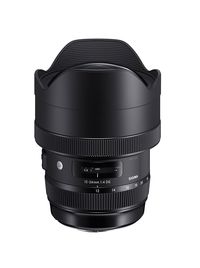


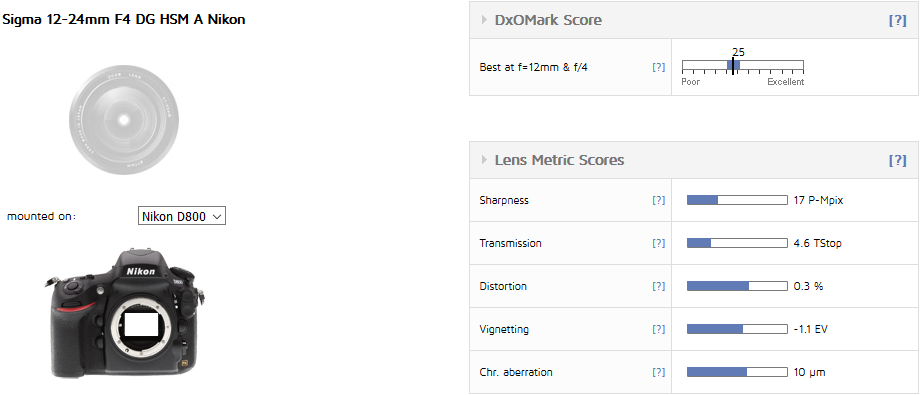
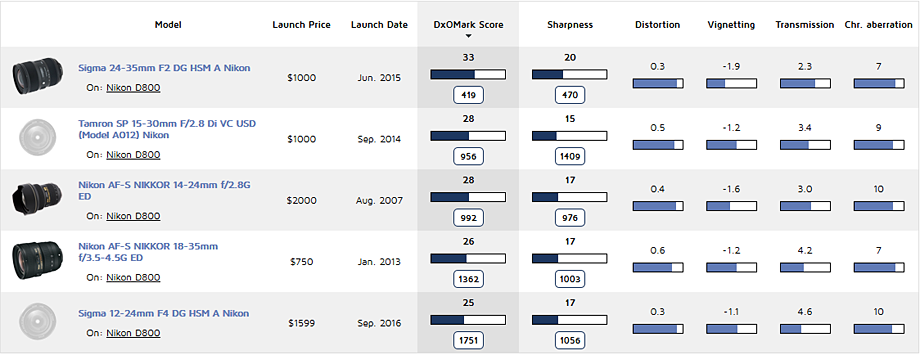
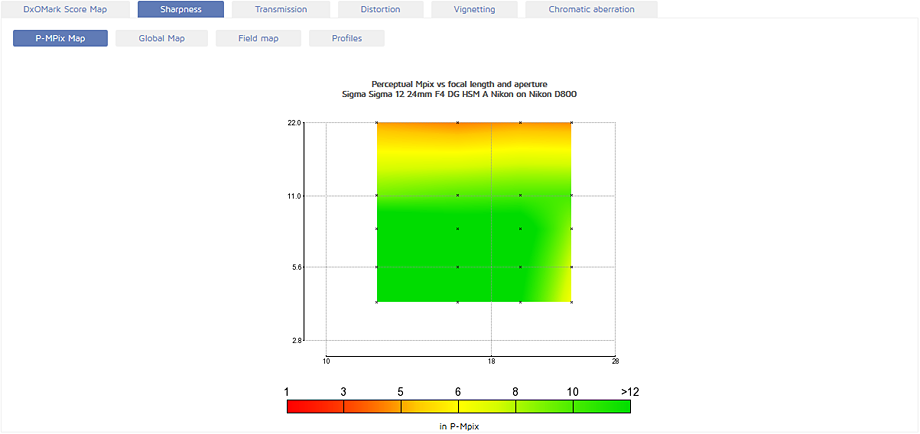
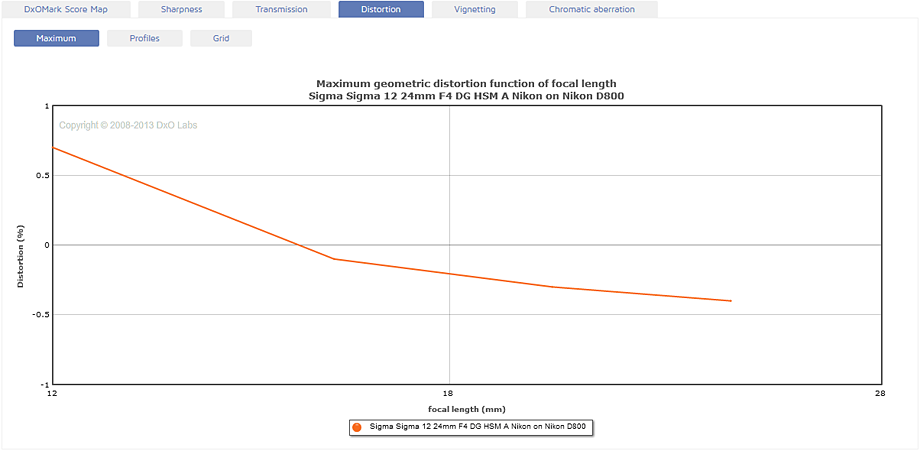
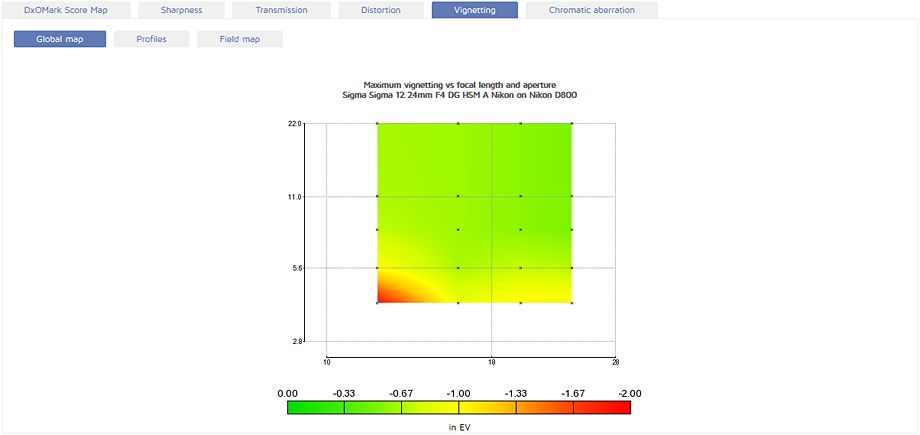
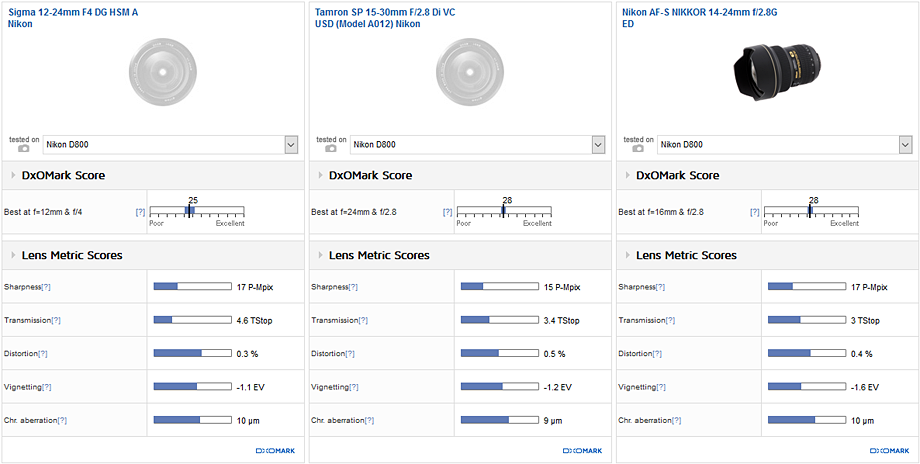
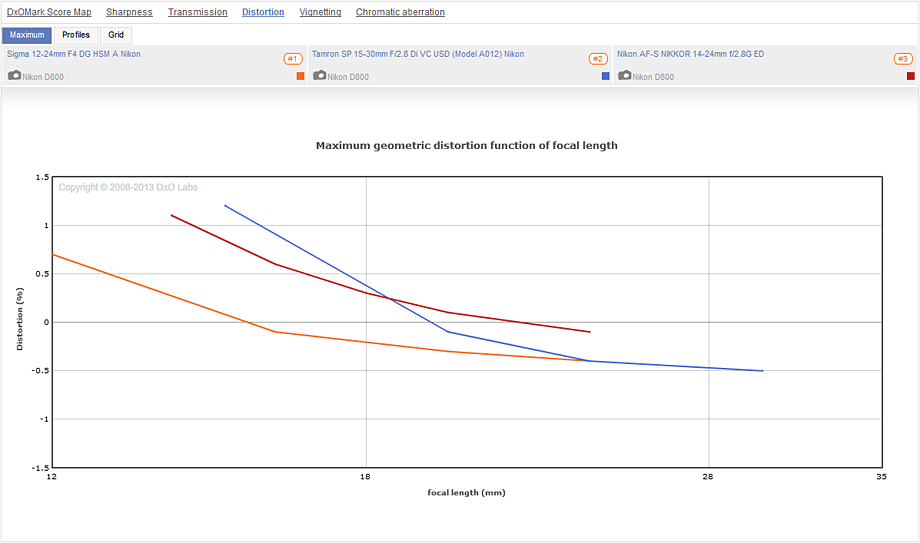
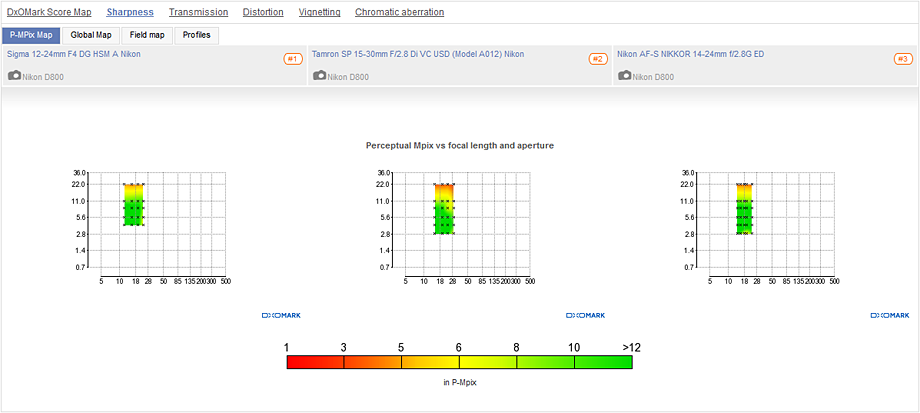
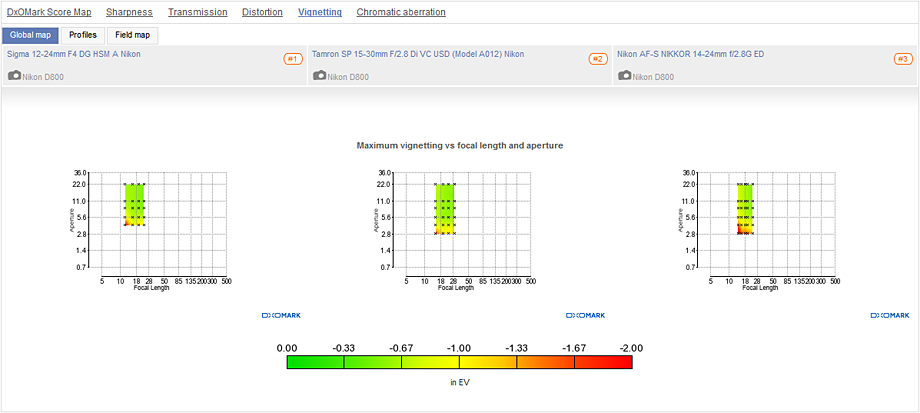
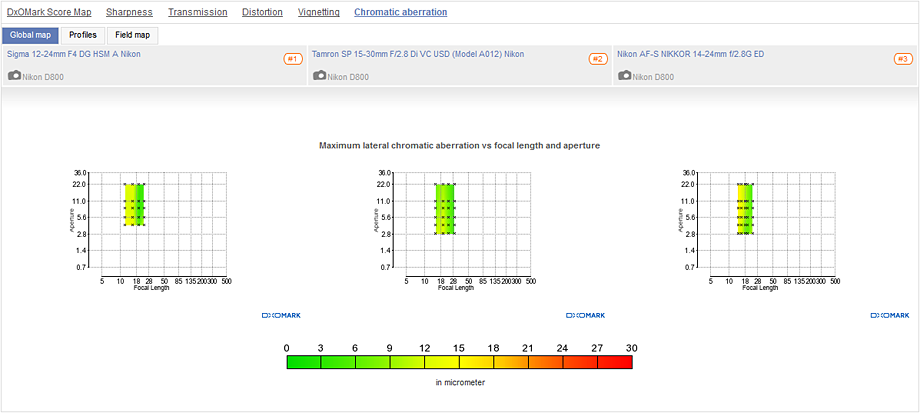
DXOMARK encourages its readers to share comments on the articles. To read or post comments, Disqus cookies are required. Change your Cookies Preferences and read more about our Comment Policy.